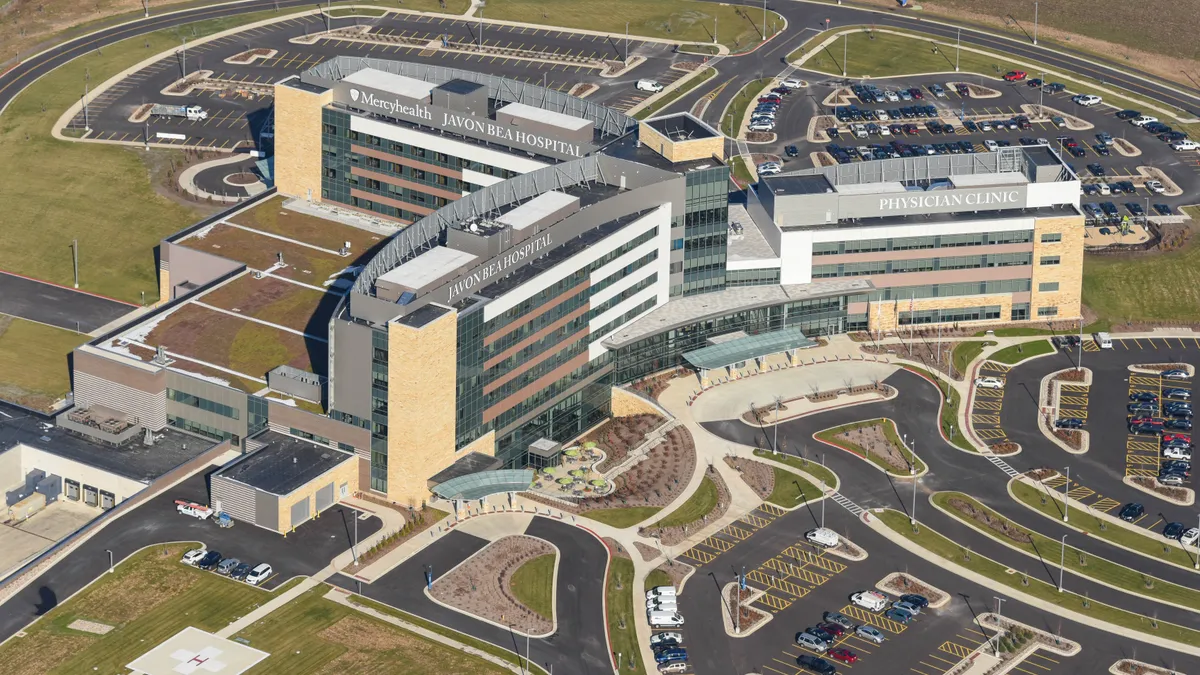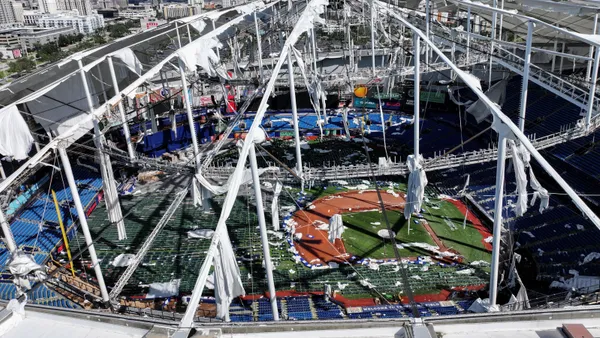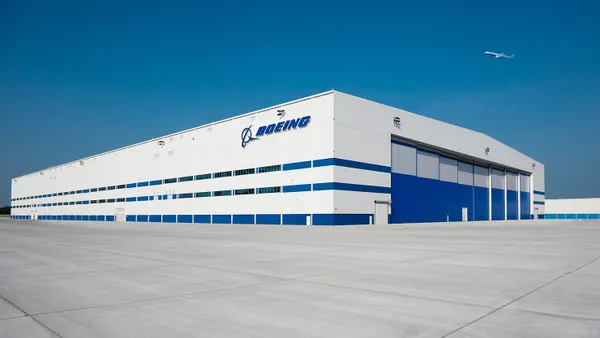To meet an aggressive schedule on a 563,000-square-foot specialty hospital complex in Rockford, Illinois, the natural way forward for Mortenson Construction was to integrate technology into every step of the process. The AECOM-designed, six-story Mercyhealth Javon Bea Hospital and four-story Physician Clinic-Riverside opened last month after just 28 months of construction.
From the earliest stages of the $505 million project, a drone was used to choreograph the movement of material and labor around the site, Joel Jacobson, told Construction Dive.
"It was a natural fit in terms of meeting our everyday requirements of communicating to our project team a current status and state of the project conditions and being able to visually communicate that through the use of the drone deliverable."

Joel Jacobson
Integrated Construction Manager, Mortenson
Every other week, a pilot flew a scripted, gridline pattern over the 70-acre plot to generate an orthomosaic map, or Google Earth-like aerial view. This biweekly data was not only used as a baseline for developing crane lifting plans and access routes, but also “became the primary medium for our superintendents to communicate the real-time conditions of the fast and ever-changing site,” he said.
The construction team was also able to fast-track the removal of stockpiled dirt by determining the amounts that were on site far more quickly than traditional surveying methods, Jacobson said, adding that the level of detail the drone provided resulted in considerable cost savings. In general, the drone was able to capture within 30 minutes an amount of data that would have taken two people two full days, he said.
The drone was also leveraged to keep visiting city, county and safety inspectors safe — providing them a bird’s eye view of hard-to-reach places. Where specs were needed, “we were able to fly the drone, take a picture and send it back down to the inspector to keep them safe, their feet on the ground and get them the same, if not better, quality deliverable in the end,” said Jacobson.
Though technology is sometimes perceived as a disruption to tried-and-true workflows, decision-makers at Mortenson saw the clear value in drone data, according to Jacobson. “It was a natural fit in terms of meeting our everyday requirements,” he said, and was implemented “not just for the sake of it being innovative … but because it adds value to our team members and our current process.”
To coordinate the facility’s many systems and ensure that the efforts of 550 craftworkers at peak daily activity were in line with the intended design, Mortenson used reality capture to create a virtual representation of jobsite conditions that could be overlaid with the building plans.
“We would run daily clash detection that helped the transition from a design-communicated state of the model to a fabricated state,” Jacobson said. The coordination effort was completed within six months and proactively caught upwards of thousands of issues ranging in severity, he said.
One of the larger issues that was flagged, for example, was that isolation electrical panels within operating rooms did not meet the intended code requirements. Working within the virtual environment, AECOM and Mortenson huddled to reconfigure neighboring ductwork to ensure compliance, resolving the problem before it escalated.
The 360-degree deliverable retains its value throughout the life of the project, according to Mortenson, as a resource for planning maintenance and renovations, visitor wayfinding, training and more.












